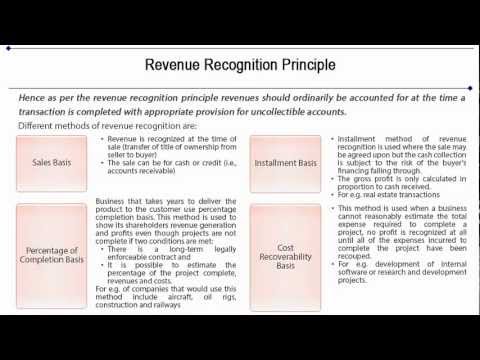
Business accounting is the process of gathering and analyzing financial information on business activity, recording transactions, and producing financial statements. A user-friendly option for small business accounting, FreshBooks makes it easy to track income and expenses and includes a self-employed version just for you. Before you can start recording any financial transactions, you’ll need to create a chart of accounts for your company. The chart of accounts is a list of accounts in your general ledger that will be used to record financial transactions.
Accountants for Small Businesses
But nothing beats up-front, personalized advice from a certified professional—in this case, a bookkeeper, accountant, or CPA. Bookkeepers, accountants, and CPAs all bring something different to the table. So, we might be a bit biased, but we think that the best accounting software for a small business is Deskera Books. It starts with as little as $9 per user, per month, and you can have unlimited guests (you only pay for your admin users).

Open a business checking account and a business savings account
Small businesses would not have to pay self-employment tax since it’s an organization with employees, but the company will have to pay employment taxes. Stagger bill payments and have a system or methodology behind when and how you pay certain bills. Allow electronic payment systems, which is more convenient and faster in many cases. Finally, structure payroll in billing cycles that flow well with the company’s income stream.

What are business rates? A guide for small businesses
Most accountants charge by the hour, but some accept a monthly retainer fee. At the same time, businesses need to make sure they pay their own bills on time to avoid late fees and maintain a solid reputation. These expenses that haven’t been paid yet are categorized as accounts payable. All of these transactions will need to be entered into your accounting software by making a journal entry. This can happen for things such as bank charges that you may find when you reconcile your bank account at the end of the month. Or, it can be for depreciation entries if you’re recording depreciation for big-ticket items (such as building purchases, expensive computer systems, or the purchase of a company vehicle).
Step 2: Open a business bank account and business credit card
- Intuit Inc. does not warrant that the material contained herein will continue to be accurate nor that it is completely free of errors when published.
- That’s because the single-entry bookkeeping is a lot more simple and straightforward than the double-entry one.
- Key accounting best practices for small businesses include keeping businesses’ finances separate from personal finances, maintaining accurate records, and tracking income and expenses.
- Loans and advances are calculated based on a store’s previous sales, and repayments are made back through the store’s future sales.
That means determining whether you’ll be accepting payments online, through a POS system, or in person. Accounting software eliminates a good deal of manual data entry, making it entirely possible to do your own bookkeeping. However, it can be difficult to catch up if you fall behind on reconciling transactions or tracking unpaid invoices.
Canadian store owners only need to start collecting Goods and Services Tax (GST) and Harmonized Sales Tax (HST) when they have revenues of $30,000 or more in a 12-month period. If you want, you can collect GST/HST even if you don’t earn this much in revenue, and put it toward input tax credits. But as a small business owner, there comes the time where it makes sense to hire outside help.
There are different ways to organize files, depending on what you need to store. You might choose to work with a virtual bookkeeper if you’re comfortable connecting via Zoom call or email. The fees may be lower, but be sure to ask about their background and experience before entering into an agreement to contract their services. Small businesses that are required to pay estimated quarterly taxes but fail to do so may be assessed a penalty by the IRS.
If you’re using accounting software, the accounting cycle is automated, reducing the number of steps drastically. Choose wisely, as once you choose an accounting method, you’ll need authorization from the IRS to change it. To make it easy to get started, we’ve created a guide with the 10 essential steps necessary for accounting how to create a cash flow statement for small business. By knowing what you need to do and getting some guidance on how to do those things, you can be performing accounting tasks for your business in no time. As a business owner, the thought of doing accounting for your business may be more intimidating than the prospect of owning a business.
In this situation, businesses may choose to hire inside or outside accountants in accounting firms. Income statements, often referred to as profit and loss statements, summarize accounting for photographers a small business’s revenues and expenses over a specific period. Examples of liabilities include employee wages, income taxes, mortgage loans, and accounts payable.
The part of the cash flow statement that deals with direct and indirect cash flows is the operating activities one. Essentially, with direct cash flow reporting, the cash is shown based on the actual cash transactions. Keeping track of all the above using different spreadsheets, or even physical folders can become time-consuming and tedious really subsidiary company fast. That’s why many businesses also explore desktop application development services to create tailored accounting solutions that perfectly fit their specific needs. Once the adjusting entries are made, an adjusted trial balance must be prepared. This is done to test if the debits match the credits after the adjusting entries are made.

These types of taxes are different from the above in that they are paid by you, the employer. As a business owner, this will help you to better analyze and monitor the growth of your business. That’s because the single-entry bookkeeping is a lot more simple and straightforward than the double-entry one. Recording data correctly is just the first step in doing accounting for your small business. Our latest data once again highlights the challenging economic environment that small businesses nationwide are facing, without having to chase down ‘unapproved debt’. Broader quarterly sales results were more promising, driven by gains in education (+5.9% y/y) and healthcare (+4.9% y/y), sales for small retailers continued to fall (-3.3% y/y).
Proper documentation of financial transactions is important for preparing financial statements like balance sheets, preparing tax returns, and monitoring a company’s financial health. This guide is brought to you by Bench, an online bookkeeping service. With this guide, we’ll walk you through the methods, apps, and services that will help you set up your financials and put your new business on the path to success. If you have employees or you sell products, you should be using the accrual accounting method.
Popular software options include QuickBooks Accounting and Expensify. Fortunately, today’s small business accounting software applications such as QuickBooks Online, Xero, and FreshBooks are designed to make it easy to set up your business. If you’re a North American store owner on Shopify, you can use Shopify Payments to accept debit or credit card orders. This saves you the hassle of setting up a merchant account or third-party payment gateway.
Based on the nature of your business, you might decide to offer credit to customers. Instead of collecting payments at the point of sale, you may choose to invoice them at a later date. The general ledger is a collection of accounts that display the changes made to each account based on past transactions, along with the current balances in each account. Following tentative signs of improvement in the previous quarter, Xero’s UK Small Business Index, part of XSBI, averaged 83 points this quarter, a drop of 12 points compared to the last set of data.
Extensive data storage within accounting software increases your company’s efficiency, allowing quick access to details like payment history. Savvy record-keeping is key for monitoring business expenses and discovering new avenues of growth. In addition, maintaining accurate records ensures that business owners remain responsible for tax obligations to the government and their employees.
Though not a recommended method, all you need to start doing accounting for your business is a pencil and paper, and a lot of patience. Your small business tax filing obligations vary depending on how your business is structured, the types of products and services you sell, whether or not you have employees, and where you’re located. Most reputable accounting software allows you to scan or snap a picture of receipts and other documents using your phone and attach it to the transaction. Few small business owners are accounting experts, but to be successful, it helps to know a little about how to do accounting for a small business. The importance of accounting for small businesses can’t be underestimated. Whether you’re starting a brand-new business or you have some experience under your belt, creating a solid accounting plan can help you monitor and maintain your financial health.
Before you take on any small-business bookkeeping tasks, you must decide whether a single- or double-entry accounting system is a better fit. The entry system you choose impacts how you manage your finances and how your bookkeeping processes will work. Some accounting software products automate bookkeeping tasks, like transaction categorization, but it’s still important to understand what’s happening behind the scenes. It all begins with getting your accounting software set up correctly.
She has worked in the private industry as an accountant for law firms and ITOCHU Corporation, an international conglomerate that manages over 20 subsidiaries and affiliates. Lizzette stays up to date on changes in the accounting industry through educational courses. Companies typically prepare balance sheets at the end of every quarter, but individuals can prepare them at any time.
 فروشگاه لوازم و آموزش تعمیرات موبایل و کامپیوتر | فروشگاه poweric فروشنده تجهیزات تعمیرات تعمیرات موبایل
فروشگاه لوازم و آموزش تعمیرات موبایل و کامپیوتر | فروشگاه poweric فروشنده تجهیزات تعمیرات تعمیرات موبایل

